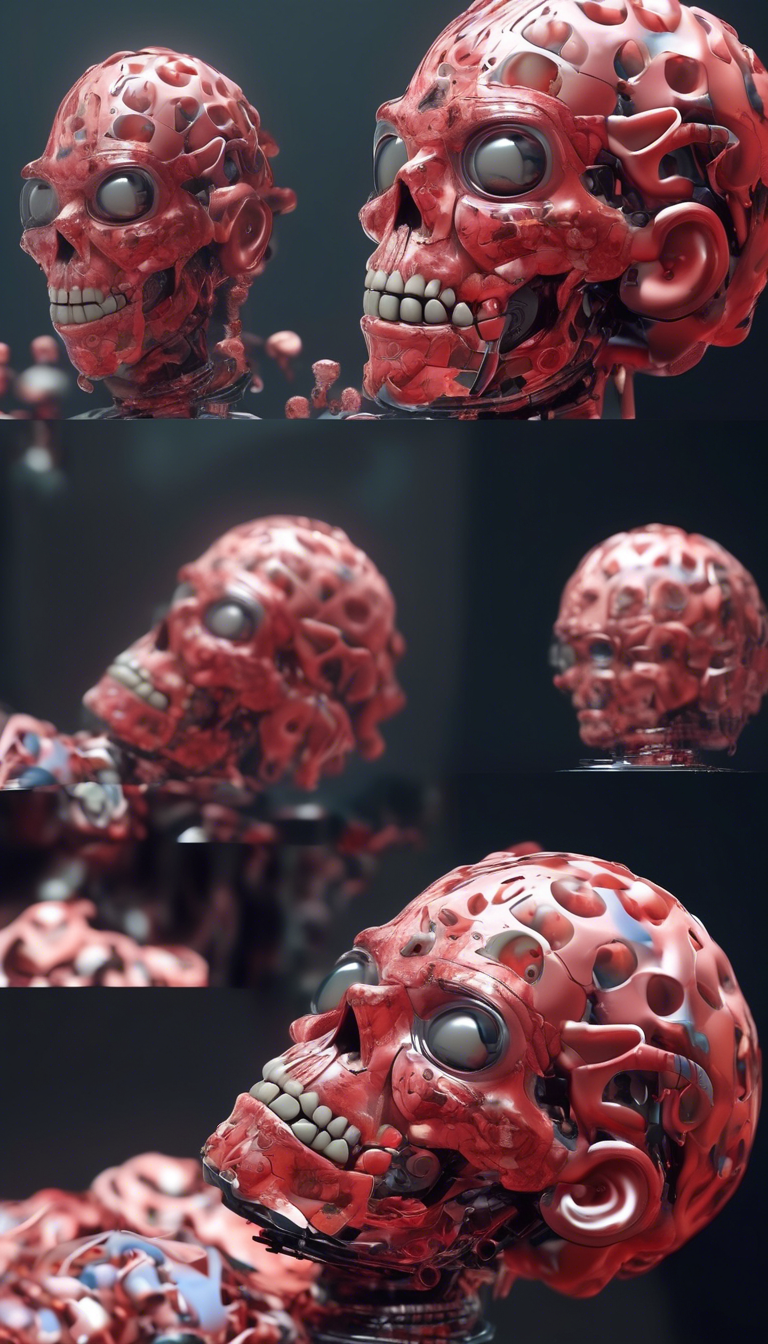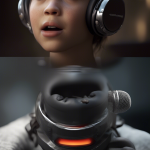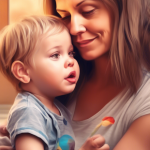The Evolution and Impact of AI Animation 3D in Modern Content Creation
The digital landscape has witnessed remarkable transformations over the past few decades, with the emergence of AI animation 3D at the forefront of this revolution. With powerful algorithms and machine learning, AI has redefined the ways in which 3D animation is created, impacting various industries, including film, gaming, and advertising. The technology not only streamlines production but also creates opportunities for unparalleled levels of creativity and expression.
AI animation 3D has evolved significantly since its inception. Initially, animation relied heavily on manual keyframe graphics, which required significant time and labor. Artists and animators extensively mapped out character movements, facial expressions, and object interactions. However, as computer technology advanced, the integration of AI made the animation process more efficient and accessible to creators of all skill levels.
Advancements in Technology
Over the years, several key advancements have propelled AI animation 3D to new heights:
- Machine Learning Models: AI-driven models like Generative Adversarial Networks (GANs) aid in creating realistic textures and dynamic animations through data-driven learning.
- Real-time Rendering: Technologies such as NVIDIA’s RTX graphics cards have made it possible to render complex 3D scenes almost instantaneously, allowing artists to visualize their creative ideas in real-time.
- Motion Capture Innovations: AI enhances motion capture technologies, facilitating the translation of live performances into animated content, thereby bringing characters to life with remarkable fluidity.
Impact on Content Creation Processes
The impact of AI animation 3D on content creation has been profound. Here are some ways it influences the industry:
- Increased Efficiency: With AI automating tedious tasks like rigging and shading, animators now have more time to focus on storytelling and creativity.
- New Creative Possibilities: AI-generated animation can produce unique visual styles and animations that blend various artistic techniques, offering creators fresh opportunities for storytelling.
- Cost Reduction: By streamlining projects, AI reduces production costs, making high-quality animation more affordable for independent creators and smaller studios.
Furthermore, the accessibility of AI tools has democratized animation. Platforms like Blender, which now incorporate AI features, empower a wider audience to engage in animation. Hobbyists and aspiring artists can utilize these tools to create immersive 3D content without needing extensive training or resources. The fusion of creativity and advanced technology inspires a new generation of storytellers, further enriching the landscape of digital media.
The Role of AI in Interactive Experiences
AI animation 3D significantly shapes interactive experiences, particularly in gaming and virtual reality (VR). It enables developers to create more immersive environments and realistic character interactions. Here’s how:
- Dynamic Characters: AI allows characters to adapt and respond intelligently to players’ actions, creating a more engaging gameplay experience.
- Training Simulations: In industries like medicine and aviation, AI-powered simulations provide realistic training environments that enhance learning outcomes.
- Enhanced User Engagement: By leveraging AI, creators can design experiences that react in real-time to user inputs, making content more captivating than traditional narratives.
The future of AI animation 3D looks promising, with ongoing innovations leading the charge. Companies are investing heavily in research to enhance the existing capabilities of AI, waiting to see the marriage of creativity and technology give rise to even more sophisticated animations. As AI continues to evolve, we can expect captivating animated experiences that blur the lines between the real and the virtual, unlocking untapped realms of storytelling.
AI animation 3D holds transformative potential for modern content creation. It streamlines complex processes, enhances creative possibilities, and democratizes access to animation tools. As artists and engineers collaborate to push the boundaries of what’s possible, the future of animation appears bright and full of opportunities for innovation and creativity.
Comparing Traditional Animation Techniques with AI Animation 3D Solutions
In the ever-evolving landscape of animation, the choice between traditional techniques and modern AI animation 3D solutions can significantly impact a project’s outcome. Traditionally, animation has been a meticulous process, often involving hand-drawn frames or stop-motion techniques that require substantial time and talent. However, with the advent of technology, AI animation 3D solutions have emerged as a formidable alternative, offering unique advantages and efficiencies.
The Essence of Traditional Animation Techniques
For years, traditional animation stood as the gold standard in the industry. Animators dedicated countless hours to create vivid characters and rich stories through various methods. Some key aspects of traditional animation include:
- Hand-drawn Animation: This method involves artists sketching each frame by hand, resulting in smooth motion and expressiveness.
- Stop-motion Animation: This technique uses physical objects and captures them frame by frame to create the illusion of movement. It’s time-intensive but yields charming visuals.
- Cel Animation: Utilizing transparent sheets (cels) to color and layer drawings, this method requires an extensive process of painting and photographing.
These methods are labor-intensive and often require a team of skilled artists and considerable production time. The creativity in traditional animation can lead to some of the most beloved films and shorts, showcasing the unique style and flair of the artists involved.
AI Animation 3D Solutions Transforming the Industry
On the flip side, AI animation 3D solutions are reshaping how creators approach animation. Harnessing sophisticated algorithms and machine learning, these technologies can generate complex animations quickly and at a fraction of the cost of traditional methods. Some advantages include:
- Speed: AI tools can produce animations in a matter of hours that would take weeks or months in traditional settings.
- Cost-Effectiveness: By minimizing the need for extensive labor and resources, these solutions can make high-quality animation accessible to a broader range of creators.
- Customization: Users can easily modify and adapt animations based on real-time data and feedback, allowing for rapid iteration on projects.
- Realism and Flexibility: AI can create hyper-realistic animations that are difficult to achieve using traditional methods, especially in character and movement design.
These innovations provide animators with tools that increase their creative potential. Projects that once seemed unfeasible can now become reality, thanks to AI capabilities.
Comparison and Compatibility
While both techniques hold value, they serve different needs and preferences in the animation landscape. Traditional technologies focus heavily on the artistic process and manual input, while AI animation 3D solutions lean into automation and efficiency. Interestingly, these two worlds can intersect.
Using AI tools alongside traditional methods can enhance workflows. For example, an artist might sketch a character by hand, then use AI to animate the character in a 3D space. This fusion can lead to uniquely appealing results that honor artistic tradition while maximizing the benefits of modern technology.
Choosing the Right Approach
Deciding whether to use traditional techniques or AI animation 3D solutions largely depends on the project’s goals, budget, and timeline:
- Short Projects: AI animation might be the ideal route, allowing for swift production without sacrificing quality.
- Artistic Projects: If the main goal is artistic expression and style, traditional methods can offer unparalleled depth.
- Collaboration and Adaptability: Projects requiring quick changes and teamwork could benefit from the flexibility of AI.
The animation industry has never before had such diverse tools at its disposal, empowering creators to blend techniques and craft compelling narratives that engage and resonate with audiences.
As both traditional and AI animation methods continue to evolve, the synergy between artistic heritage and technological innovation promises a vibrant future for animation. Each approach offers unique strengths that can enhance storytelling and visual expression, ensuring that creativity knows no bounds.
Conclusion
As we reflect on the evolution and impact of AI animation 3D in the landscape of modern content creation, it becomes evident that the technology is reshaping how stories are told and visualized. Traditional animation techniques, while still revered and widely used, face significant competition from AI-driven solutions that offer unprecedented opportunities for creativity, efficiency, and accessibility. The convergence of these methods is leading to innovative hybrid approaches that can elevate visual narratives to new heights.
The journey from traditional animation to AI animation 3D hasn’t been merely a technological shift; it has also fostered a revolution in storytelling. In the past, animators relied heavily on manual labor, often consuming substantial amounts of time and resources to produce compelling content. Each frame required painstaking attention to detail and a deep understanding of artistic principles, which often meant that only the most skilled artists could produce high-quality work. However, AI animation has democratized the animation process. By harnessing algorithms and machine learning, artists can now focus more on the creative aspects of storytelling while allowing technology to handle repetitive tasks. This shift not only speeds up production but also enables artists and creators to experiment more freely, resulting in richer and more diverse storytelling experiences.
Comparing the efficiency of traditional techniques with AI animation 3D solutions reveals stark differences in workflow and output. While traditional methods are limited by the speed of human skill and effort, AI animation can produce bases or even full animations in a fraction of the time. Algorithms can analyze vast amounts of data, creating animations that are fluid and lifelike without the tedious process of frame-by-frame adjustments. This capability opens up new possibilities, allowing small studios and independent filmmakers to create animations that would have previously required significant investment. In this sense, AI animation 3D becomes a powerful ally for those seeking to enter the industry without extensive resources.
Moreover, the scalability offered by AI technologies is a game-changer across various sectors. For larger studios, employing AI animation tools can dramatically cut down lead times for major productions, allowing for quicker turnaround on projects and enabling them to meet audience demands in a fast-paced content market. It allows for quicker iterations and refinements, enhancing collaboration among creative teams. Entire sequences can be generated, tested, and modified in ways that simply weren’t feasible before. The feedback loops are shorter, fostering an environment where experimenting with styles and narratives can be done swiftly and efficiently.
Despite the impressive advantages that AI animation brings to the table, it is essential to recognize the irreplaceable value of traditional techniques. There is a unique artistry in hand-drawn animation, stop-motion, and classical 3D modeling that AI cannot replicate. The human touch adds emotional depth, personality, and nuance that technology, in its current form, struggles to emulate. Many creators still see the merit in incorporating traditional practices into their workflow, using AI to enhance rather than replace their original artistic vision. This hybrid approach not only respects the art form’s roots but also accentuates it, giving rise to a new era of animated content that celebrates the best of both worlds.
The conversation about AI animation 3D is poised to grow as technology continues to evolve. As we see developments in AI-driven creativity, we might anticipate new genres and styles emerging that are uniquely possible through this medium. Will AI open the doorway to new storytelling methods that couldn’t exist with traditional techniques alone? The answer remains to be seen, but the potential is undeniably exciting. As creators, storytellers, and audiences navigate this exciting terrain, the fundamental aspect will be the stories that we wish to tell and the experiences we want to impart.
Ultimately, the goal of any animation, whether created through traditional means or AI, is to connect with audiences and evoke emotion. The collaboration between technology and artistry will continue to define the future of content creation. Indeed, in a world where technology and creativity meld, the possibilities are vast and promising. Embracing the best of both approaches will be the roadmap to discovering what’s next in the vibrant art of animation. The future of AI animation 3D is just beginning, and its potential is limited only by our imagination.


